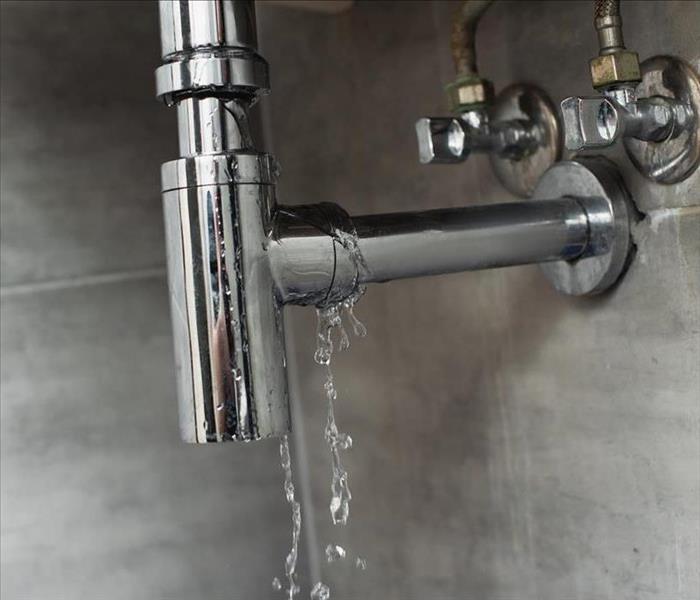Understanding Clean Water Damage
10/11/2021 (Permalink)
Category one water damage is defined as clean water. The problem likely stems from a freshwater line break. However, do not be fooled. While the source of the damage is initially uncontaminated water, it can and will evolve the longer it is left to fester.
As water sits on the floor, it becomes contaminated with bacteria, chemicals, and whatever else is on the floor, walls, or shelves and within the water. Therefore, it is crucial you deal with the water in your facility as quickly as possible.
3 Ways To Deal With Clean Water Damage
When dealing with the aftermath of a supply line break, time is of the essence. The water category can change rapidly, so if the spill is manageable, it is critical to wipe it up as soon as it is noticed. If it is a significant flood, contact a remediation specialist in Colorado Springs, CO, to manage the cleanup process. Either way, there is a four-step process to mitigating the problem.
1. Turn Off the Water Source
Before dealing with the growing flood on your facility floor, you will need to turn off the water supply to the affected area. If the spillage is in a kitchen or bathroom, you can often find the supply shut off under a sink or behind a toilet. If the problem occurs elsewhere in the building, it might be best to shut off the main water supply until you can locate the appropriate shutoff.
When working with a professional mitigation company, the team that arrives on the scene will probably know where the shutoffs are because they will have superior knowledge of plumbing systems. It is best to stay out of the pros way and let them do what they are trained to do.
2. Clean Up the Spillage or Overflow
Once the valve is off and there is no more water feeding into the flood, you can begin the cleanup process. You will need a mop, bucket, towels, etc., to dry the area as quickly as possible, limiting secondary damage.
A professional service will have access to commercial shop vacs, pumps, air movers, fans, etc., making the cleanup that much faster and more efficient. One thing to note is working with professionals almost always results in a quicker recovery time.
3. Call an Expert
Assuming the damage to the property is significant, resulting from a broken pipe, it is likely never better to try and DIY the project. A professional crew can remove more water in a small window than your company is likely equipped for, and speed and efficiency are crucial to mitigating any significant or lasting damage.
A clean water flood is typically referred to as a category one flood. As long as the disaster is cleaned up quickly, you can mitigate any significant damage. However, if the water sits for a long time, it will worsen to category two or three problems. When dealing with clean water or water disaster, like a minor or significant flood, it is likely in your best interest to hire a professional company.



 24/7 Emergency Service
24/7 Emergency Service
